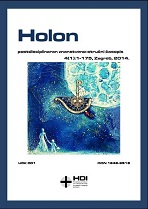
We kindly inform you that, as long as the subject affiliation of our 300.000+ articles is in progress, you might get unsufficient or no results on your third level or second level search. In this case, please broaden your search criteria.


Pokolenie ’80. Niezależna twórczość młodych w latach 1980–1989 – to tytuł wystawy, która na przełomie 2010 i 2011 r. gościła w krakowskim Muzeum Narodowym. Jej materialnym śladem pozostanie imponujące wydawnictwo. Komisarzem wystawy i autorem koncepcji książki jest prof. Tadeusz Boruta, który i jako artysta malarz, i jako animator znaczących wydarzeń kultury podziemnej reprezentuje generację twórców debiutujących w latach 80.
More...
A review on E. T. Gombrich's A Preference for the Primitive. Episodes in the History of Western Taste and Art.
More...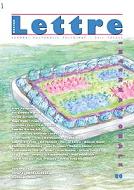
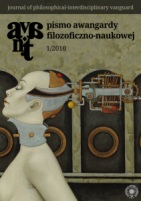
“How should I move forward?” you might ask yourself, as you stand at the threshold confronted by the darkness ahead. Many of us learn from an early age to fear the unfamiliar or the unknown. If the unknown is without light, it can become unjustifiably terrifying. How you approach the unknown is unique, as your first encounter with anything can only really be as an individual. Staring ahead into the black void of “How it is” you may wonder whether to move ahead at all. “How it is” simultaneously embodies the unknown and the familiar. The darkness contained in the structure mimics both the architecture of the turbine hall and a shipping container. “It’s fine!” you reassure yourself. What can possibly be inside? “How it is” is only complete when you, the viewer, enter the black hole”1. The work by Miroslaw Balka, a Polish artist, is a windowless room 13 m high and 30 m long that is designed to create absolute darkness inside. In the Turbine Hall of the TATE Modern, one walks up a ramp into a container like room.
More...
The tone of the exhibition is striking from the off. Upon entering the first hall, visitors in thrall to the conventional cliché that Baroque is “the art of the Counter-Reformation spread by Jesuit fathers”, will notice the large number of paintings that deal with everyday secular subjects. On the right handside wall, they see a still life by a follower of Caravaggio with a huge table richly laden with fruits, then on the central wall, the pain-distorted face of Caravaggio’s Boy bitten by a lizard. On the opposite wall there is a genre painting, a counterpart, as it were, of the “portrait with still life”: the interior of a tavern full of characters of dubious professions. Thus visitors are welcomed first by an allegory, then by a giant fruit-piece alluding to the richness and joy of life: the narcissistic self is accompanied by the withering, yellowing fruit-leaves of still “living” nature, as if to remind one of the transitory nature of existence. The two monumental still lifes speak of the joys of life, but already in the genre of natura morta, because everything is laid on a table, cut from its natural environment. Further away, the genre scene depicts the crooked, immoral characters and the deceitful life of gangland streets, then on the following picture depicting card-players, we find that cheap entertainment and worldly pleasures are but a cover for the actual background of Baroque’s attitude towards life: the uncertainty lurking behind temptations of everyday reality and a foreboding of changing values.
More...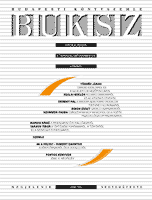
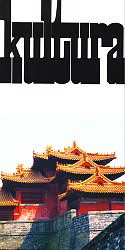
Interviews with Tang Guo, Xu Zhen and Yu Youhan.
More...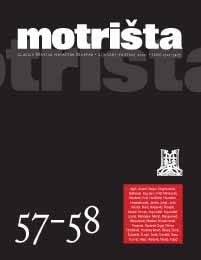
Nekolicina se likovnih umjetnika ujedinila u zajedničkoj zamisli, kojoj je bio cilj “napraviti nešto”. Početno mjesto bio im je grad Ljubuški, u kojemu su, u Duhanskoj stanici, pripremili prvu izložbu pod ovim znakovitim nazivom...
More...
Franjevački samostan Sv. Duha u Fojnici odavno je ne samo Božji hram već i hram kulture i bosanskohercegovačkog kulturnog i historijskog nasljeđa
More...
Izložba slika u Umjetničkoj galeriji Kristijan Kreković, Franjevački samostan Svetih Petra i Pavla, Tuzla
More...
Izložba Marina Topića u Galeriji “Centar“ pri Centru suvremene umjetnosti u Podgorici
More...
The phenomenon of beggars is analyzed in the article. The advantage of the blind beggars over other beggars is revealed. The works depicting blind beggars by sculptures and artistists of the 16th-20th centuries is systemized and presented.
More...
Considering peculiarity and complexity of urban structure it is possible to state that sustainable development of cities is different at different levels of urban structure and in different cities that are in different geopolitical, natural, cultural, social and economic situation. The aim of the article is to evaluate potential of contemporary theoretical urban models and possibilities of their application to ensure sustainable development of Kaunas city. The potential of theoretical models and conceptions is evaluated dividing urban structure of Kaunas into main hierarchical levels of metropolitan region, city, meta-zones and meta-structures and urban infill (city parts).
More...
The article discusses the conception of developing the artistic competence of art teachers. The main components of the artistic competence of pre-service art teachers and their relationships are discussed. The article reveals pre-service art teachers’ artistic competence as a complicated, complex, and multi-dimensional phenomenon of knowledge, aptitude, acquired skills, abilities, and value-based provisions, forming the creator’s personality, whose creative interests and activity develop artistic competence.
More...
In the article the problem of sprouting in the churchyards of Siauliai district and the relation of trees with the architecture are touched. By the researches the forms of churchyards, the assortment of ligneous plants, age, condition and influence to the general church view, peculiarity of churchyard environment is estimated. Attention is given to tree growing places, pruning, age and value. There are named typical plants which are charakteristic to the eight churchyards of Siauliai district.
More...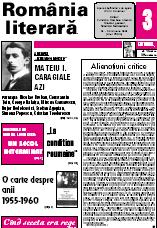
Comments on Constantin Brâncuşi's work and comments on Gislain Mollet-Vieville's book "Art Minimal & Conceptuel "
More...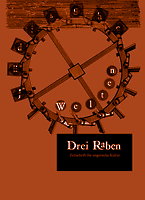
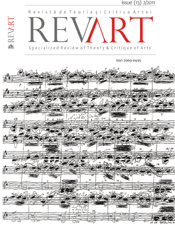
From the sensorially faithful imitation representations of plant forms and of the dynamic (increase), metaphorical behaviour of nature, an artist’s path is motivated by the scientific and technical discoveries of the social and historical context in which he performs, and which gradually changes its orientation more and more towards an artistic conceptual development and to attitude art in contemporaneity.
More...